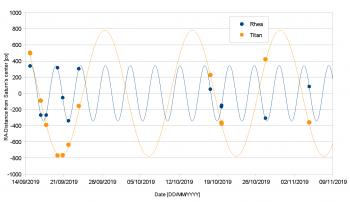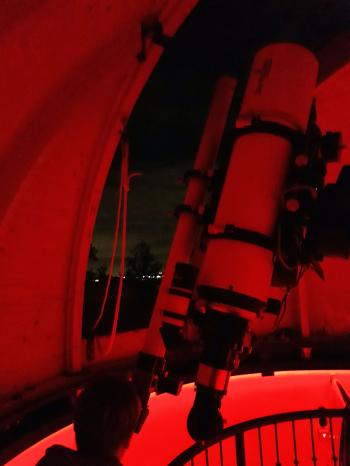Educational topicsOver the years already quite a few topics have been covered by students: Topics of research in 2022With COVID behind us we had one student again in 2022. He wanted to know how to detect an exo-planets. Although daylight length restricted the options to do proper research in the observatory, a dataset from a Spanish amateur served this purpose well. Topics of research in 2020-2021Due to COVID restrictions no students visited the observatory in the period 2020 - 2021. Topics of research in 2019
Processing an image of the Sun with a solar flare and calculating the Sun's diameter and the dimensions of the solar flare was well done. The determination of the diameter and depth of the crater Tycho on the Moon, resulted again in an impressive paper with some smart maths. The result only deviated by 0.1 percent in diameter (84.9km vs 85km) and 2.8% in depth (4.57km vs 4.70km). Due to persistent bad weather ever since the students started the exoplanet project could not be done at InFINNity Deck. Instead a dataset was provided from a Spanish Amateur, but so far no results have been shown. Educational topicsTopics of research in 2018
The distance Sun - Venus, Sun - Pluto project resulted in an impressive paper, even though no actual data was hot due to weather limitations. Observational data was acquired from Stellarium instead. The group working on the colour image using a monochrome camera managed to produce a pretty image of Saturn. Finally the last group did a pretty good job, together with myself as third observer, to determine the true and apparent field of view of the Galilean Telescope. Adjacent image shows one of the students behind the GTT60. If you have any questions and/or remarks please let me know. |
InFINNity Deck... Astrophotography... Astro-Software... Astro Reach-out... Equipment... White papers...
Astro Education Topics Sun Watching Day Zonnekijkdag


